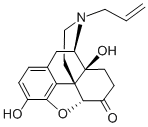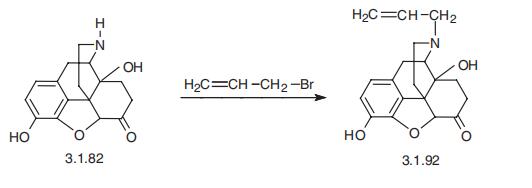Chemical Properties
| Melting point | 184° (Lewenstein), 177-178° (Sankyo Co.) |
| alpha | D20 -194.5° (c = 0.93 in CHCl3) |
| Boiling point | 465.27°C (rough estimate) |
| Density | 1.2223 (rough estimate) |
| refractive index | 1.5000 (estimate) |
| Flash point | 9℃ |
| storage temp. | 2-8°C |
| solubility | Chloroform (Slightly, Heated, Sonicated), DMSO (Slightly), Methanol (Slightly), |
| form | Solid |
| pka | pKa 7.94/7.82(H2O,t =20/37,I<0.01) (Uncertain) |
| color | White to Off-White |
| InChIKey | UZHSEJADLWPNLE-GRGSLBFTSA-N |
| EPA Substance Registry System | Morphinan-6-one, 4,5-epoxy-3,14-dihydroxy-17-(2-propenyl)-, (5.alpha.)- (465-65-6) |
Safety Information
| Hazard Codes | F,T |
| Risk Statements | 11-23/24/25-39/23/24/25 |
| Safety Statements | 7-16-36/37-45 |
| RIDADR | UN1230 - class 3 - PG 2 - Methanol, solution |
| WGK Germany | 3 |
| HS Code | 2939190000 |
| Hazardous Substances Data | 465-65-6(Hazardous Substances Data) |
| Toxicity | An opiate antagonist devoid of agonist activity except for mild, specific effects at very high doses. Naloxone displays a high affinity for the μ-opioid receptor, a lesser affinity for the kopioid receptor and has some affinity for δ-opioid receptor subtypes. Naloxone produces a rapid and profound reversal of the effects of opioid administration (e.g., 1 mg, i.v., blocks the effects of 25 mg of heroin). Naloxone also antagonizes the analgesia induced by placebo, acupuncture, and stress, and in animals the hypotension due to hypovolemia or spinal cord injury. Naloxone has a short half-life (about 1 h in plasma) and is not administered orally because of rapid, “first-pass” metabolism. |


